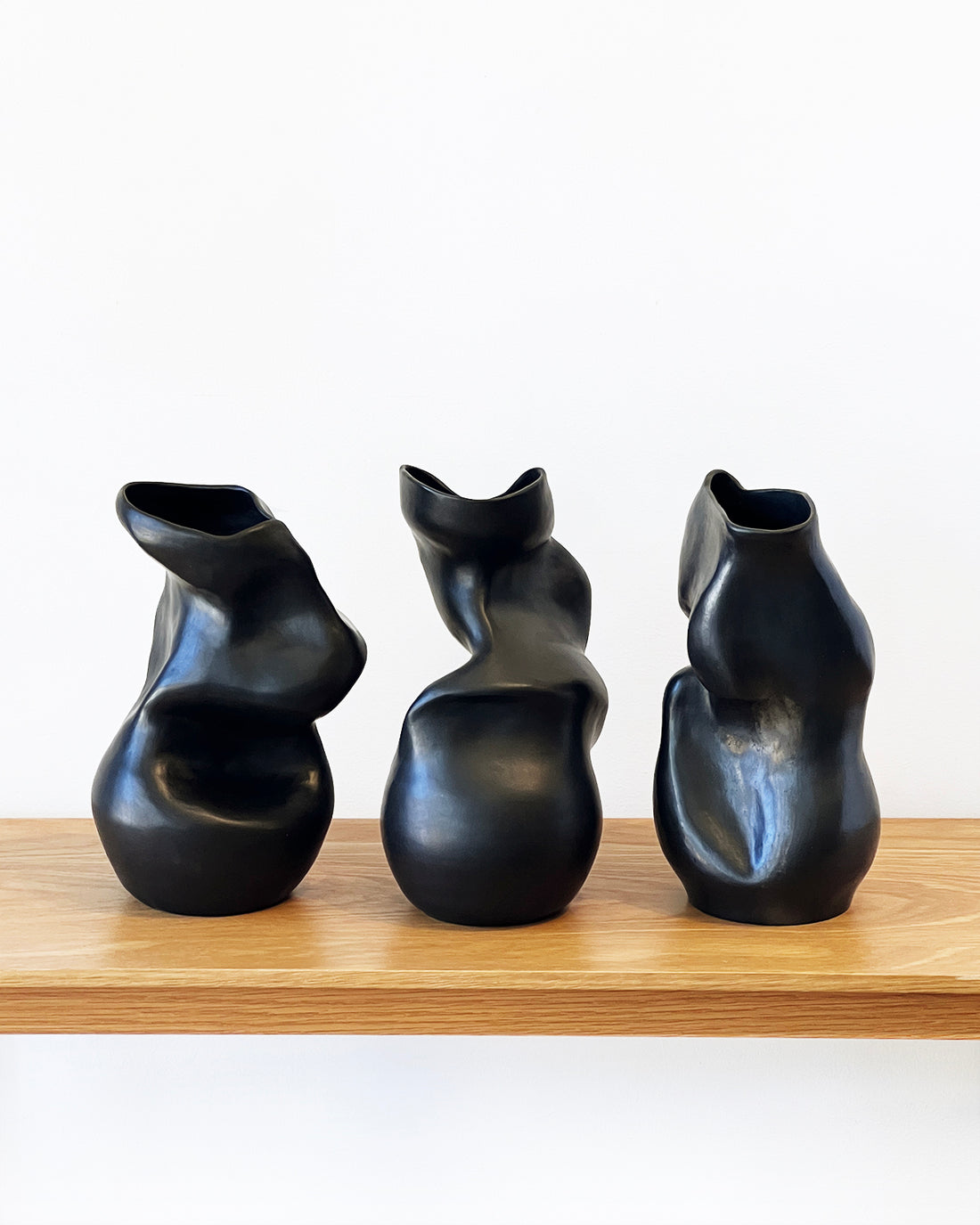What are Sculptural Vases?
Sculptural vases are more than just containers for flowers; they are art pieces that bring a sense of form and structure to any space. These vases take inspiration from abstract modern art, echoing the work of Louise Bourgeois, Isamu Naguchi, and Richard Serra. They bridge the gap between functionality and art, serving as both decorative objects and practical vessels.
The History of Sculptural Vases
The history of sculptural vases dates back to ancient civilizations, where they were often used for ceremonial purposes and as symbols of status and wealth. In ancient Greece and Rome, vases were adorned with elaborate carvings and paintings, depicting mythological scenes and everyday life. Over the centuries, the art of vase-making evolved, incorporating influences from different cultures and artistic movements. The Abstract Expressionist movement in the 1940s and 1950s gave rise to expressive sculptural forms, and the minimalist movement in the 1960s birthed the sleek forms we associate with vases today. Since then, artists and ceramicists have been experimenting with giving vases unique forms.
Why are they so popular?
Sculptural vases have seen a resurgence in popularity due to their ability to elevate home decor with their unique and eye-catching designs. The popularity of Art Deco in recent years has brought the donut vase front and center in popular interior decor. Wide circular shapes and negative space have replaced the largely geometric art deco vases of the 1990s. But sculptural vases can be so much more than donuts!
They come in a wide range of shapes and sizes and can be made in the style of any number of contemporary art movements and trends. The versatility of sculptural vases allows them to fit seamlessly into various interior styles, from minimalist to eclectic.
How to pick the best ones
The highest quality sculptural vases are handmade, reflecting the dedication and skill of artisans. Handmade vases often feature meticulous details and are crafted using traditional techniques that have been passed down through generations. This artisanal touch ensures that each piece is unique, carrying the personal imprint of its creator.
Artisans making waves in Latin America
Latin America is home to many talented artisans who create stunning sculptural vases. For instance, the Mexican ceramist studio Ila Ceramica, led by passionate artist Camila Apaez, emphasizes the intersection and collaboration with the natural world through ceramics. Her work, primarily but not exclusively manual, aims to recover and exalt ancestral feminine archetypes. The functional aspects of her pieces, as well as their relationship with space and the human body, result in objects that have utilitarian possibilities while maintaining a sculptural touch.In the Argentinian Patagonia, a female ceramist in the region of Chubut creates 100% handmade objects using artisanal clays from a local quarry. Her unique pieces are crafted using Raku and oxygen reduction techniques to achieve a signature black color, ensuring that no two vases are alike. Her work exemplifies the artistry and craftsmanship that define high-quality sculptural vases.
How to Style Sculptural Vases in the Home
- Solo Statement: Place a sculptural vase on a coffee table or mantelpiece as a standalone statement piece. Its unique design will draw the eye and add interest to the space.
- Groupings: Arrange multiple sculptural vases of varying heights and shapes together. This creates a dynamic display that can enhance a console table, shelf, or sideboard.
- Natural Elements: Fill your sculptural vase with fresh flowers, dried branches, or pampas grass to bring an organic touch to your decor. The natural elements will complement the artistic design of the vase.
- Functional Art: Use sculptural vases in functional settings, such as a centerpiece on a dining table or as storage for kitchen utensils. This highlights the utilitarian aspect of the pieces while maintaining their aesthetic appeal.
- Color Contrast: Choose sculptural vases in colors that contrast with your existing decor. This can create a striking visual effect and make the vases stand out as focal points in the room.








